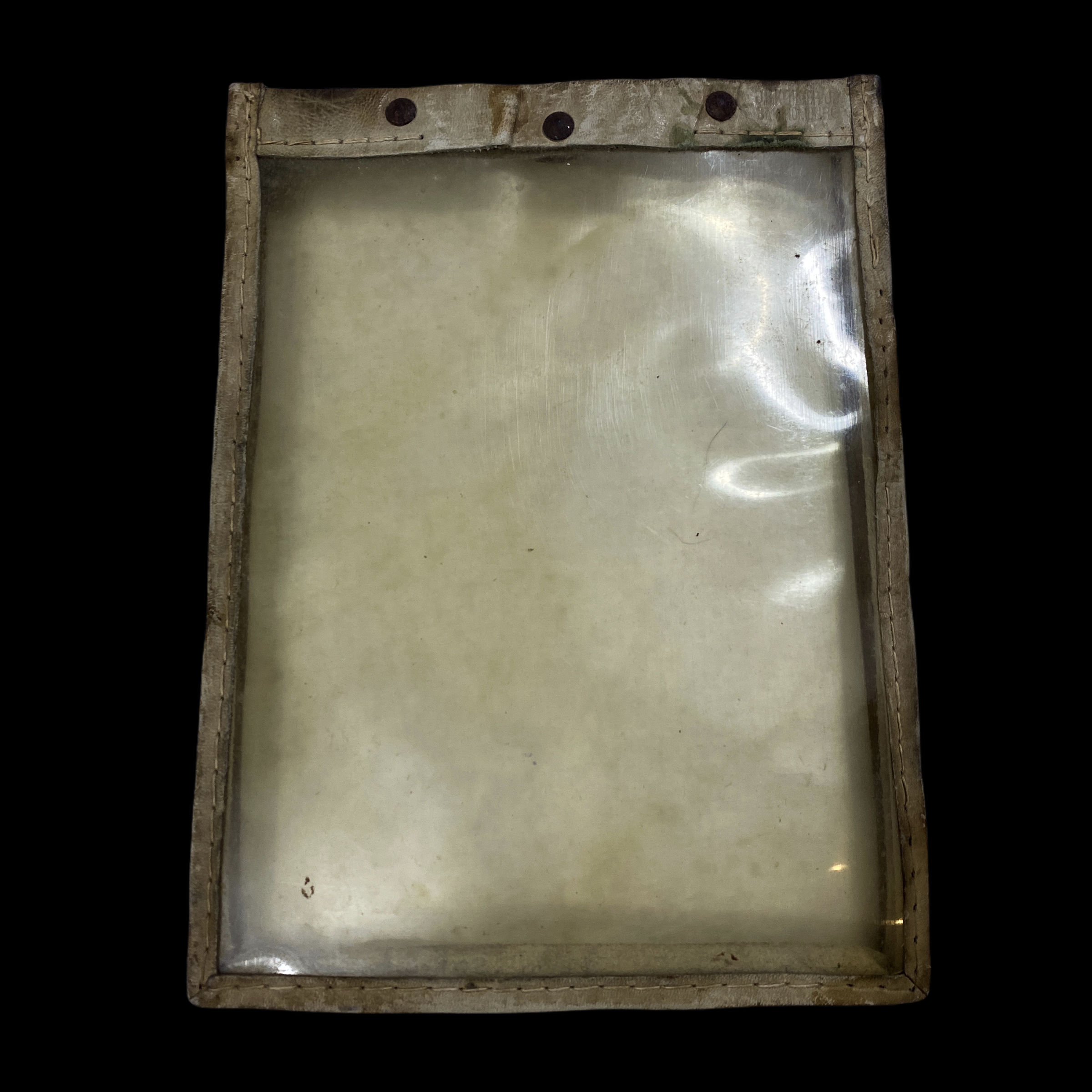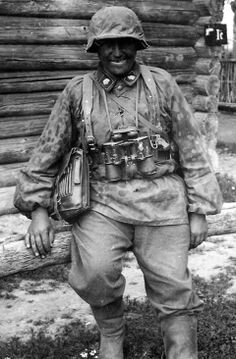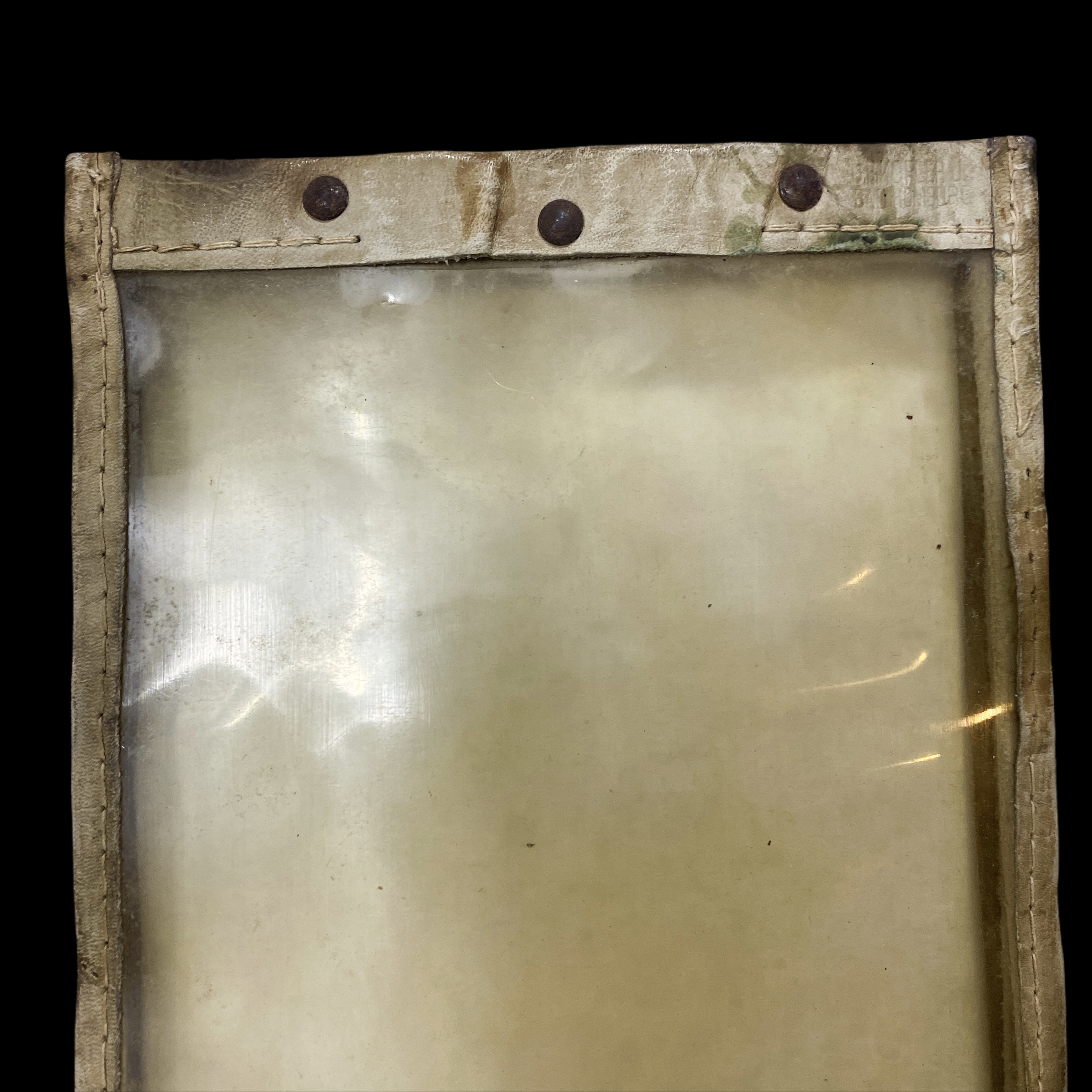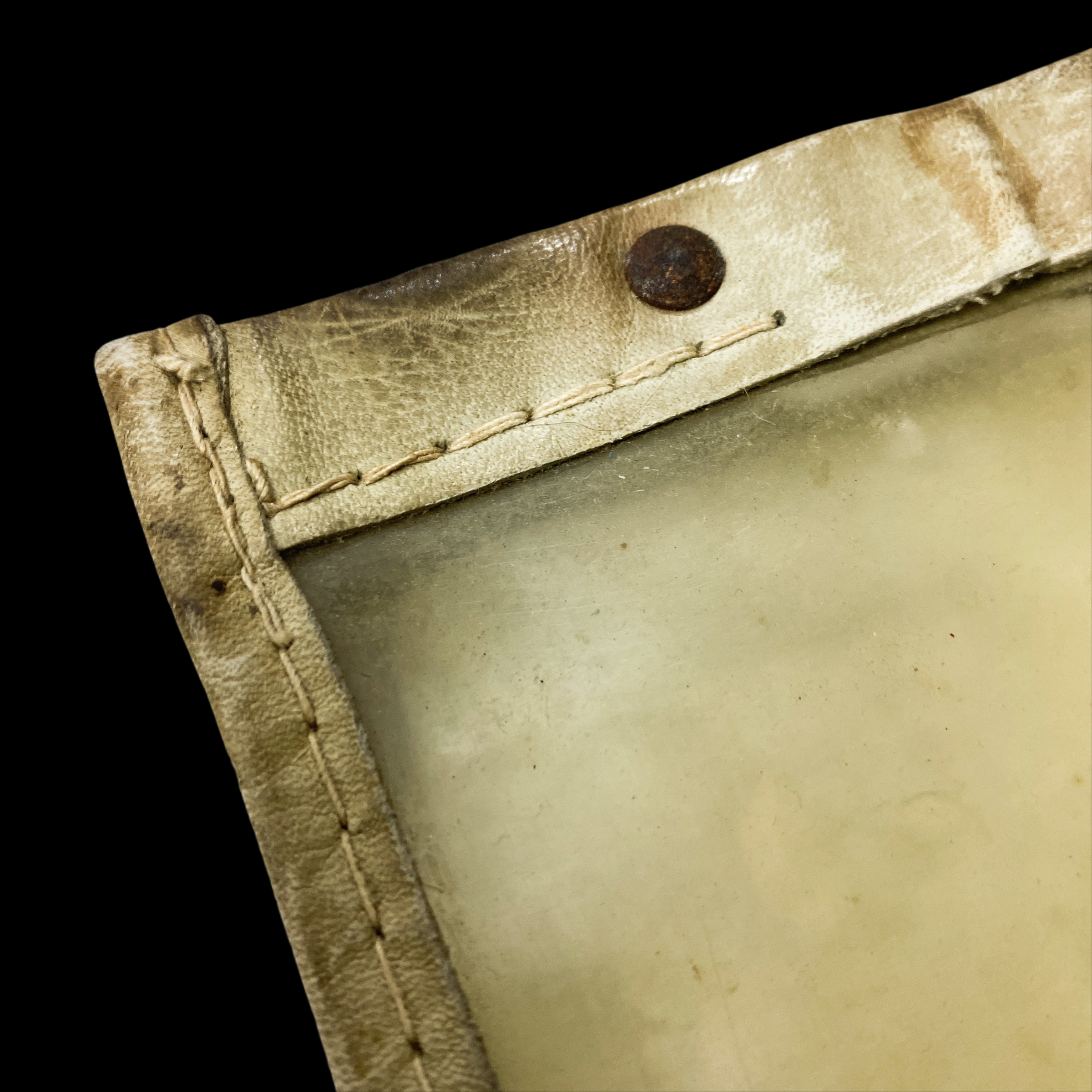Rare* WWII Veteran Battle of Normandy Captured Kartenmuffe für Meldekartentasch M35 Waterproof Map Sleeve





Rare* WWII Veteran Battle of Normandy Captured Kartenmuffe für Meldekartentasch M35 Waterproof Map Sleeve
Size: 6.5 x 8.5 inches
This original World War II ‘salty’ condition German Kartenmuffe für Meldekartentasch M35 waterproof map sleeve was captured by a WWII U.S. veteran of Virginia who fought in the Battle of Normandy, a fierce battle which took place immediately after the successful Allied landings on 6 June 1944. This map sleeve was sent back along with other captured German items from the early Normandy campaign and Battle of Cherbourg. The celluiod sleeve was meant to protect the paper map inside from rain and other environmental conditions. The sleeve is closed and stitched on all sides except the top where a folded German map would have been inserted. This sleeve is in absolutely incredible condition with average combat where that you would expect from a period piece of this caliber. The German Meldekartentasche map/dispatch cases were issued on a very limited basis to specifically designated personnel such as German unit commanders, messengers, and observers. The M35 map/dispatch case was based on the Weimar era, Reichsheer pattern map/dispatch case with minor variations. The M35 map/dispatch case underwent a front closure modification in mid-1936, and an additional small front pocket was added in 1938, although the early pattern cases continued to be manufactured through-out the war. The M35 map/dispatch cases were issued with assorted map reading tools, instruments and accessories. Regulations dictated that army issue maps were exclusively for use of army personnel and that any reproduction or improper usage were punishable offences. German army maps were generally named and numbered and were issued as required.
While it will forever be lost to history what German infantry, division, unit and soldier this M35 waterproof map sleeve once belonged to, it is evident that it played a key and extensive role in German troop movements and possibly supply lines before and during the Allied invasion of Normandy in Operation Overlord during World War II. Codenamed Operation Neptune and often referred to as D-Day, it was the largest seaborne invasion in history where soon they would turn their sights on the German port city of Cherbourg.